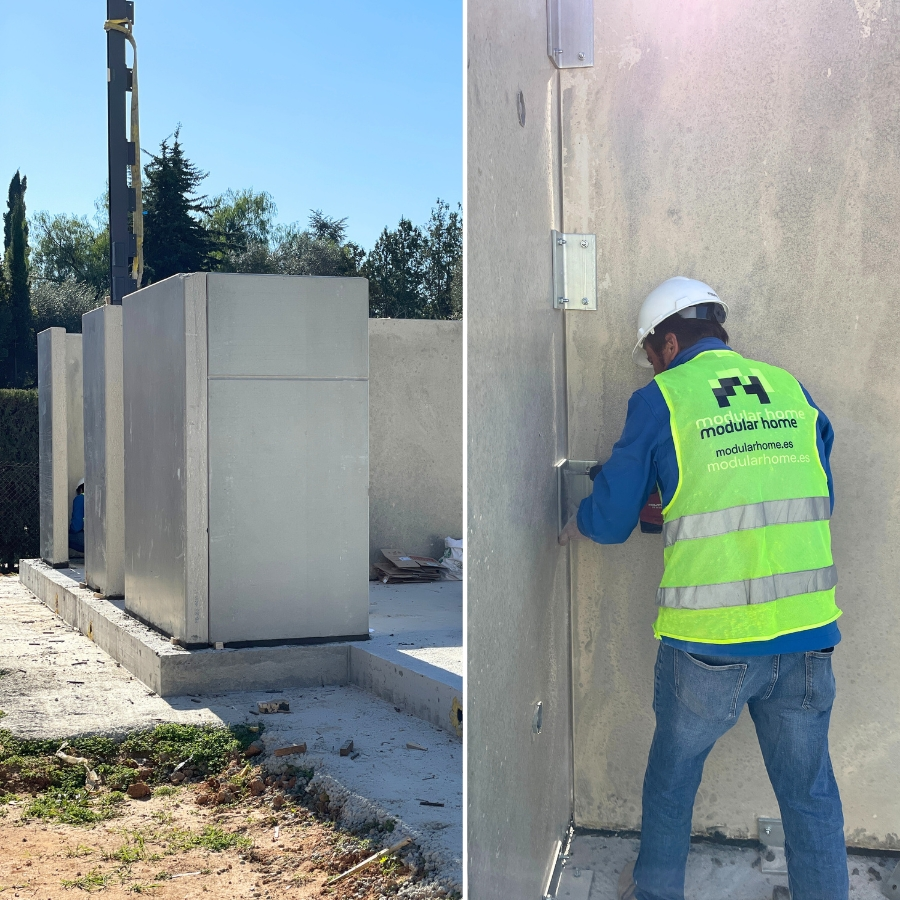Imagine the place where your new house will be built. If you have thought that the work will be a clean, beautiful and idyllic place throughout the entire process, let us tell you that it will not be like that. A construction site is an often dirty and safety-hazardous location where complicated processes must be carried out that, If special care is not taken, they can lead to unpleasant results..
That is the modus operandi of traditional construction that, although it is perfectly capable of erecting safe and competent buildings, often have these types of problems. To solve this, in recent years the concept of off-site construction has become popular.
Then We tell you everything you need to know about off-site construction and why it is the perfect solution to give life to your home. We will tell you about its main advantages and the projects for which it is most suitable. Keep reading!
Off-site construction: a new construction approach
Off-site construction, also known as modular construction or prefabricated, is a construction approach in which the components of a building are manufactured at a location other than the final construction site.
These prefabricated components are produced in factories, where they can be manufactured in a much more efficient and controlled manner. Then, They are transported to the construction site and assembled there by a team of professionals. to form the complete structure.
How is it different from traditional construction?
Without a doubt the biggest difference between traditional and off-site construction is the construction process. This, taking place in a controlled environment such as a factory, enjoys greater quality and efficiency, as discussed below.
Most used materials
One of the characteristics of this type of construction is that they allow the use of many different materials. Some of the most common are:
- Prefabricated concrete: It is widely used in off-site construction as it is manufactured in the factory for panels, columns, beams and other structural elements and then moved to the construction site for assembly.
- Steel structures: They are frequently used due to their strength, durability and diversity. It is used to create beams, columns, structural frames and other components.
- Wood: Walls, ceilings and floors are built with wood panels such as plywood and OSB boards. These panels are lightweight and strong, and can be pre-cut at the factory for easy assembly.
- Composite materials: They are used to create lightweight and strong structural elements such as pillars, beams and panels, such as glass fiber reinforced polymers or carbon fiber composites.
- Insulating panels: Polyurethane (PUR) or expanded polystyrene (EPS) panels can be used to improve thermal and acoustic insulation in off-site construction. They adhere to the walls, ceilings and floors of prefabricated elements.
- drywall: They are used to build interior walls and ceilings, with fireproof and acoustic capabilities, they are easy to install.
What are the main advantages of opting for off-site construction?
This construction method offers various advantages:
Higher construction speed
The off-site construction process It is much more agile and efficient when done in controlled environments. Furthermore, since it is done in another place, it can be done simultaneously with the foundation of the home.
 Less waste of materials
Less waste of materials
Because the construction process takes place in a factory, off-site construction is more environmentally friendly. Reduced waste and disruption on the construction site. In addition, fewer raw materials and energy are used.
Greater quality and control in manufacturing
Is more simple correctly track the traceability of each product. We are also talking about cleaner and more professional environments, so the final result will be of better quality.
Reduction of labor costs
By reducing times and standardizing processes in industrial environments, labor is less and requires less time. This means a lower overall cost that saves both the company that builds and the future owner money.
What type of projects are most suitable?
Off-site construction can be especially useful in areas where construction site access is limited. This way, operators can simply focus on the foundation to save time and then bring the modules already manufactured to simply place them.
In general terms, it is the perfect constructive solution in projects that require a repetition of standard designs, such as modular homes or office buildings.
Why choose MH as your off-site construction provider
In conclusion, off-site construction involves prefabrication of building components at a remote location and then be transported and assembled at the final site, offering various advantages in terms of efficiency, quality and costs.
Modular Home bases its success on its construction system, based on this off-site concept. What sets MH apart from traditional construction companies is that they are manufacturers and installers. This way, an exhaustive control of the traceability of each product can be carried out to ensure 100% quality.
All Modular Home products have CE and TUV quality seals. Therefore, these components can be used in any work, complying with all regulatory standards and offering professional results regardless of the total budget of the home.















